Lavender is a flowering plant of the mint plant family, grown mostly for its essential oils. Scientifically, lavender is known as Lavendula, whose family name is Lamiaceae. According to certain research, this flowering plant is native to the Mediterranean, and its uses are phenomenal. This plant of the mint family is said to help boost sleep, reduce menstrual cramps, and improve mood disorders and skin health. Lavender is also edible, even though it has a tenderly bitter taste.
Growing Lavender through Companion Planting
Companion planting is an art that involves creatively combining two or more plants within the same space for maximal productivity. Especially if you want fully matured lavenders, you might have to wait three years after planting. It would be best if you considered companion planting to use your farm space best. In the following lines, we’ll see 20 plants that combine well with lavender.
1. Thyme

Thyme combines nicely with lavender because they both grow in similar soil atmospheres. This plant also does well in a lavender companion planting setting because it helps the lavender with its scent. The scent of thyme masks the fragrance of lavender, thereby confusing lavender pests.
2. Oregano

Oregano requires a similar growing environment to lavenders, making the two plants compatible in a companion planting setting. But aside from this, oregano repels many pests, some of which could be harmful to the growth of the lavender. Oregano is an excellent attracting factor to bees, which is a great pollinator. Also, oregano will create some form of ground cover at the base of lavender beds, thereby keeping weeds and competition from the lavender plantation.
3. Stonecrop

Stonecrop, also known as Sedum, requires sandy and adequately drained soil to thrive; these requirements help lavender thrive. Great sunlight exposure also contributes to the thriving of lavenders, and this is something essential for the growth of Stonecrops as well. These two plants, therefore, make good planting companions.
4. Yarrow

Yarrow is another plant you can combine adequately with lavender. Both plants require similar environmental conditions to thrive, and one of the specific requirements for Yarrow’s proper growth is a loose soil texture that goes well with lavender. Another thing that makes Yarrow a good companion plant is that even when it is neglected, it thrives.
5. Echinacea
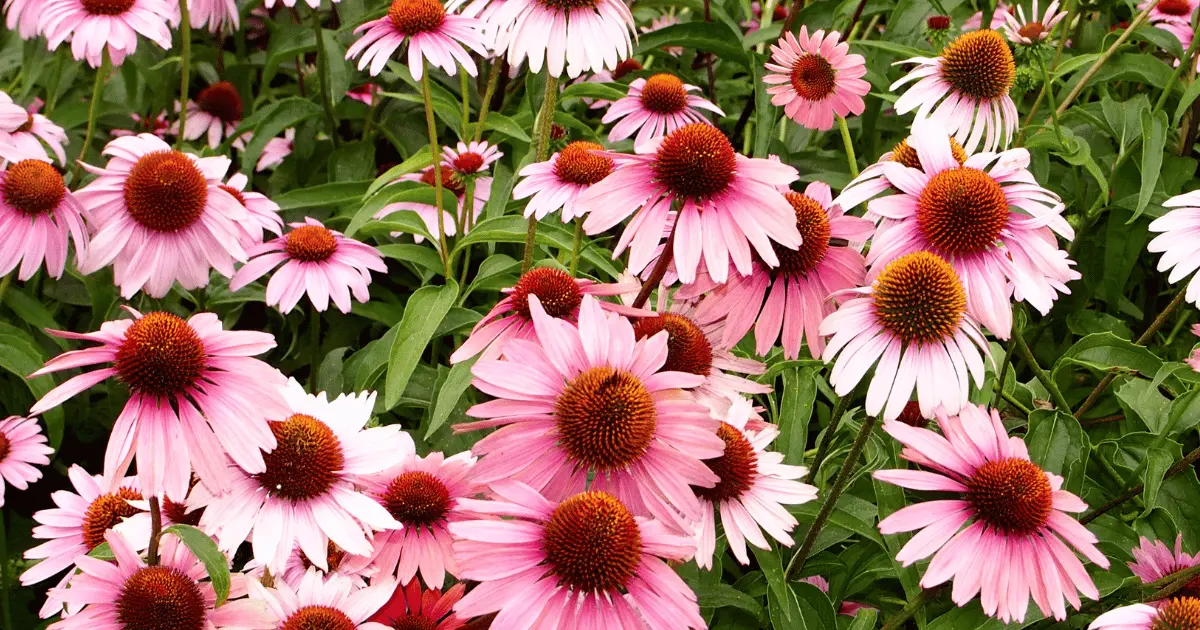
This flower requires a loose soil texture that drains properly to thrive. Echinacea is a perennial flower, and it also attracts hoverflies and parasitoid wasps that are beneficial to the farm. These factors make them good planting companions for lavender.
6. Sage

Sage thrives in hot climates and weather conditions, which are also favorable to Lavenders. Sage is almost like the natural pairing with lavender because, just like lavender, it needs only a little supply of water to survive.
7. Broccoli

The fragrance of lavender will keep pests and disastrous insects away from the broccoli farm when both plants are planted as companions. Planting broccoli with lavender, therefore, makes a great pair.
8. Rosemary

Pruning once or twice a year and basic water needs are conditions that help Rosemary and lavender grow properly. Boost, asides from this factor, Rosemaries are great pest repellants for the garden space. They also help keep bees coming to the farm space, ensuring proper plant pollination.
9. Mugwort
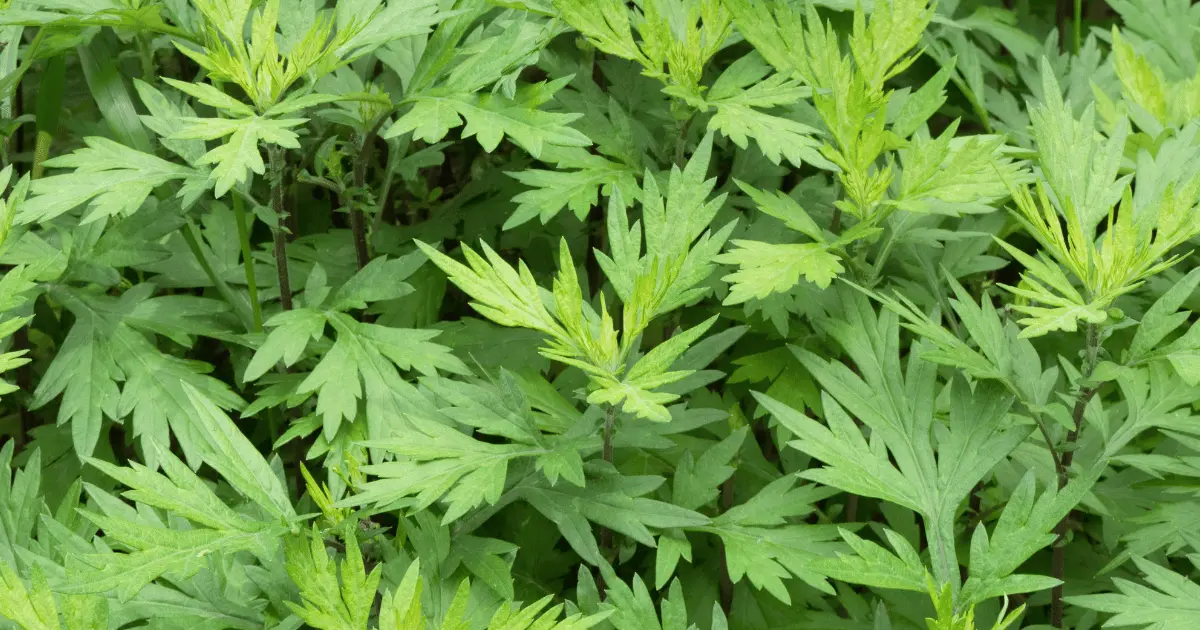
Mugwort is a silvery herb that grows close to lavender and does well. Although mugwort needs a little more moisture in its environment than lavender, you can still make a companion plant of both. You could plant the mugwort closer to the shadier parts of your farm. Moreover, mugwort is a pest and mosquito repellant; it even attracts pollinating insects to the farm.
10. Cat Mint
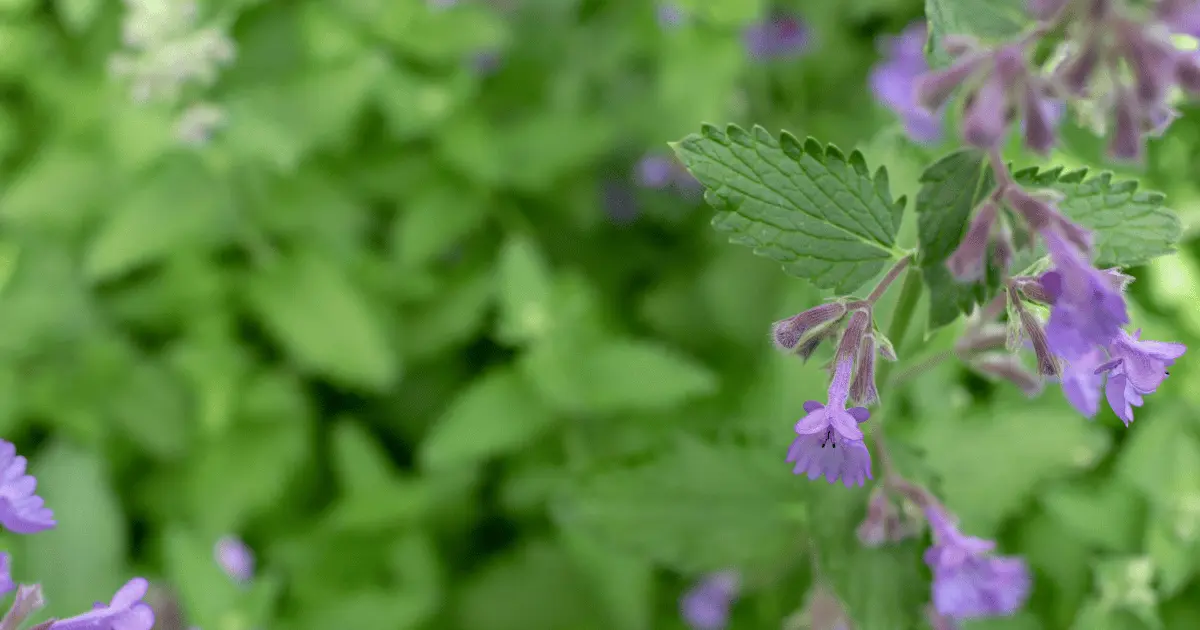
The growing and caring conditions of both cat mint and lavender are similar. They both thrive in drought-prone terrains; Cat Mint will not create heavy nutrient competition when planted close to lavender.
11. Oleander

Although poisonous, oleander is also an excellent plant close to a lavender plantation. Oleander survives fine in drought and heat conditions and even resists deer. Oleander also grows well in poor soils.
12. Scallions

These small onion-like bulbs of the Allium plant family are also great planting companions for lavender. Scallions repel pests that could harm the lavender and survive in the same conditions as the lavender.
13. Garlic

Garlic has a pungent smell that’s completely distasteful and a deterrent for many garden pests, making it a good planting companion for lavender. The fantastic thing about combining both plants is that they both survive in similar environmental conditions.
14. Blue Fescue

Blue Fescue is up for growth as long as the soil is well drained. Certain research terms Blue Fescue as ultra-drought tolerant. As a result of the resilient nature of blue fescue, it pairs well with lavender.
15. Olives
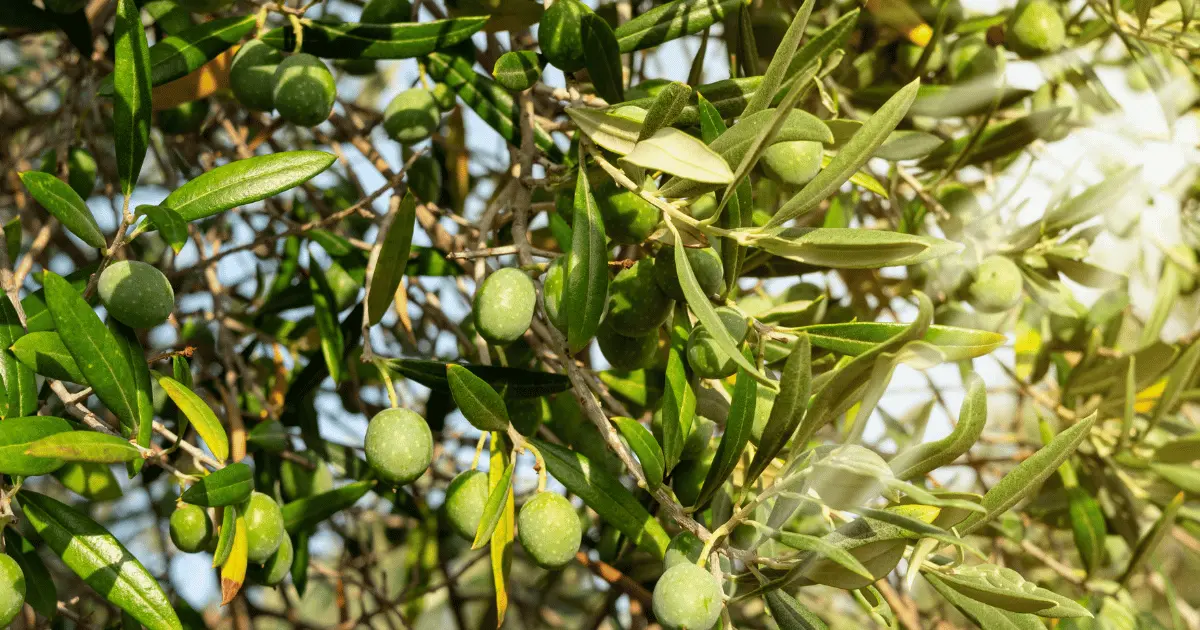
Olives thrive when planted close to lavender. They are both resistant to drought and extremities of weather. Both plants even make a good pairing for Mediterranean gardens.
16. Zinnia

Zinnia, amid a lavender plantation, will create a spectrum of colors beautifying the planting space. It also thrives in neglected environmental conditions such as low humidity, huge sunlight exposure, and more. Zinnias also attract beneficial insects, such as pollinators, to the farm space.
17. Jasmine
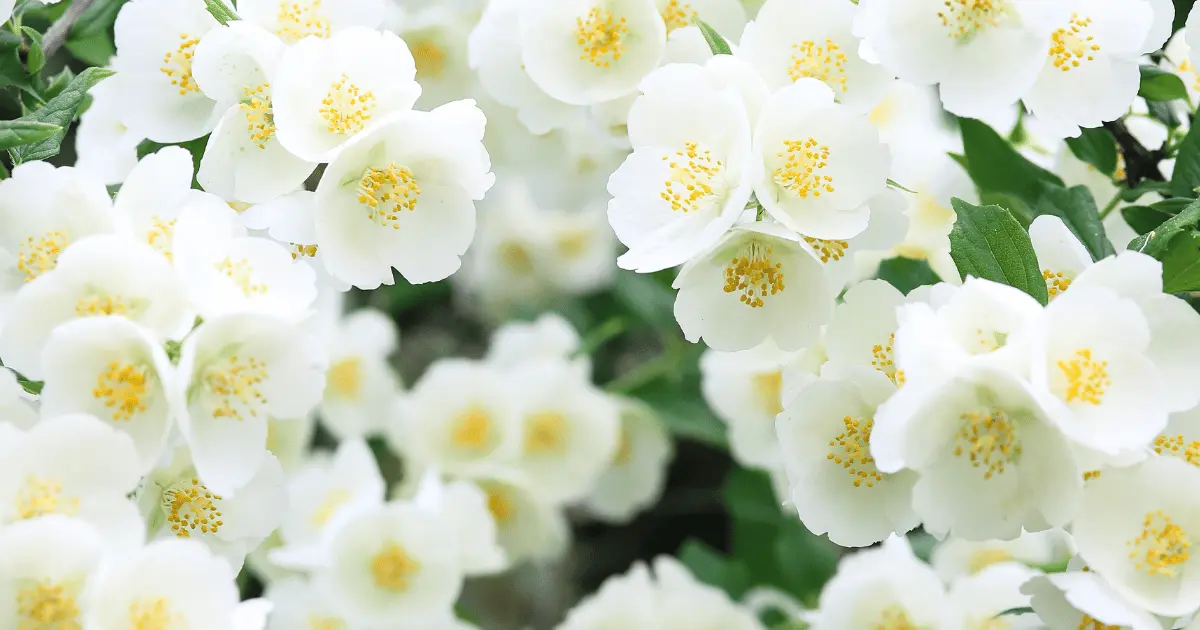
Jasmine adds aesthetic beauty to farm spaces; it complements the lavender in creating a beautiful farm space. Some growing conditions of Jasmine and lavender are similar. Still, an essential factor in planting both plants close to each other is that you must give the Jasmine an 8 feet planting distance from the lavender. This is to allow it enough room to spread and thrive.
18. Marigold

Marigolds do not need refined soil texture to grow; the same goes for lavenders, making both plants good companions. Marigolds attract beneficial insects to themselves, but they also deter pests from lavenders.
19. Shasta Daisy

The shasta daisy plant is scientifically known as Leucanthemum superbum, and it combines nicely with lavender in the same space. It’s a lover of hot and dry weather conditions, and lavender also thrives in the same conditions as this plant. And guess what? Both plants do not need a lot of water to survive.
20. Rose
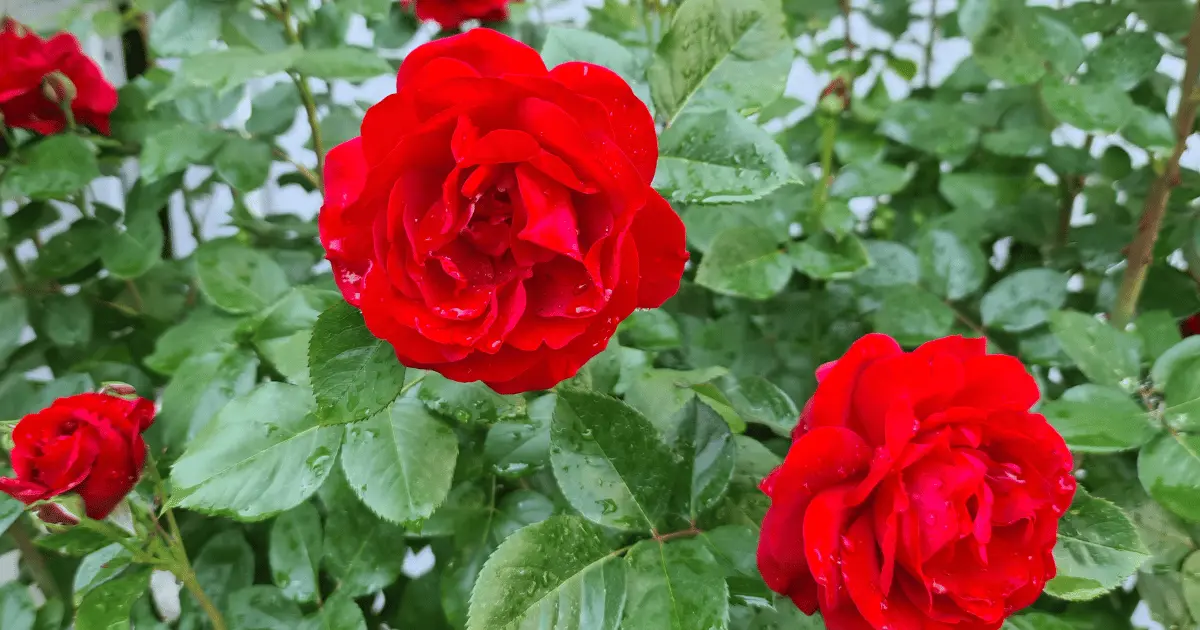
Rose also pairs well with lavender because both plants exhume fragrances that make the garden smell more attractive. Rose grows in similar environmental conditions as lavenders. One precaution, however, is to distance the rose a little from the lavender because their water requirements in dry weather are slightly different.
Precautionary Measures for Using Lavender Companion Plants
Lavenders thrive in harsh weather conditions, so naturally, not all plants work well with them. When choosing companion plants for lavender, check if there are special requirements for the other plant to thrive, so you can pay attention to them before starting your farm. Hosta, camellias, impatiens, mints, and Fuschia are plants that don’t do well with lavender, so keep them away from the lavender farm.
Growing Lavender
A fantastic exposure to sunlight and well-drained non-acidic soil does well with lavender. To ensure the soil is adequately drained, it’s advisable to mix gravel into the soil before planting the lavender. The planting of this flowering plant can be done between March and May. After planting, water only slightly or even after long periods. Pruning the plant should be done yearly, as caring for lavender is relatively easy.
After planting, it takes about two to three years to get fully matured lavender from the lavender plants. However, you can stay harvesting the flowers from the first year of planting, and when you do need to harvest, it’s best to do so early.
